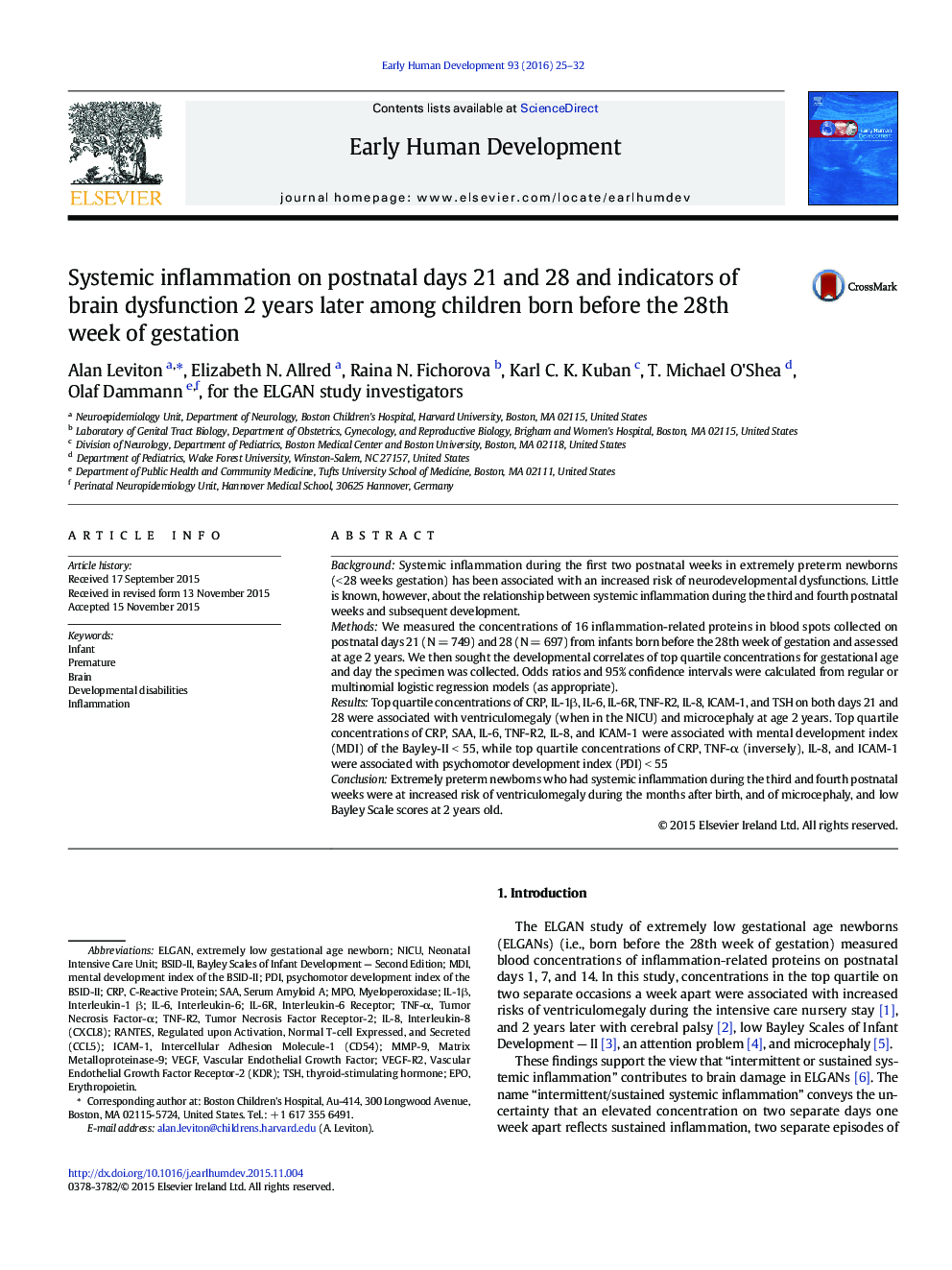| Article ID | Journal | Published Year | Pages | File Type |
|---|---|---|---|---|
| 3916556 | Early Human Development | 2016 | 8 Pages |
•Extremely low gestational age newborns (ELGANs) can have systemic inflammation during the third and fourth postnatal weeks•ELGANs who have systemic inflammation during the 3rd and 4th weeks appear to be at increased risk of early ventriculomegaly•ELGANs who have systemic inflammation during the 3rd and 4th weeks appear to be at increased risk of microcephaly at 2 yrs•ELGANs with systemic inflammation during the 3rd and 4th weeks appear to be at increased risk of low mental scores at 2 yrs
BackgroundSystemic inflammation during the first two postnatal weeks in extremely preterm newborns (< 28 weeks gestation) has been associated with an increased risk of neurodevelopmental dysfunctions. Little is known, however, about the relationship between systemic inflammation during the third and fourth postnatal weeks and subsequent development.MethodsWe measured the concentrations of 16 inflammation-related proteins in blood spots collected on postnatal days 21 (N = 749) and 28 (N = 697) from infants born before the 28th week of gestation and assessed at age 2 years. We then sought the developmental correlates of top quartile concentrations for gestational age and day the specimen was collected. Odds ratios and 95% confidence intervals were calculated from regular or multinomial logistic regression models (as appropriate).ResultsTop quartile concentrations of CRP, IL-1β, IL-6, IL-6R, TNF-R2, IL-8, ICAM-1, and TSH on both days 21 and 28 were associated with ventriculomegaly (when in the NICU) and microcephaly at age 2 years. Top quartile concentrations of CRP, SAA, IL-6, TNF-R2, IL-8, and ICAM-1 were associated with mental development index (MDI) of the Bayley-II < 55, while top quartile concentrations of CRP, TNF-α (inversely), IL-8, and ICAM-1 were associated with psychomotor development index (PDI) < 55ConclusionExtremely preterm newborns who had systemic inflammation during the third and fourth postnatal weeks were at increased risk of ventriculomegaly during the months after birth, and of microcephaly, and low Bayley Scale scores at 2 years old.
